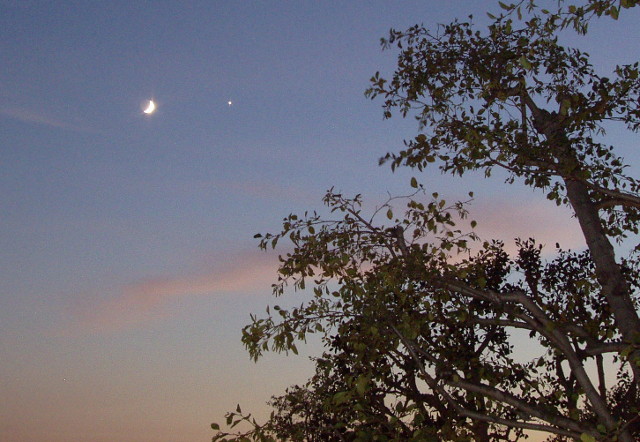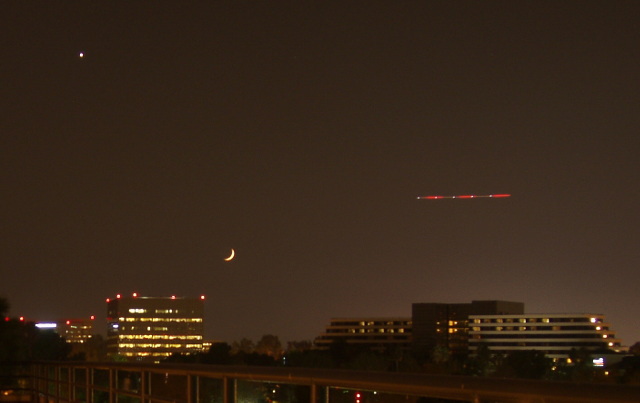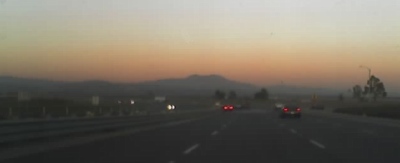I saw the planet Venus four times on my walk to and from lunch today! Yes, in broad daylight!
Someone on Slashdot mentioned it was possible last week. I took it seriously because back in high school, I used to watch Venus fade into the brightening sky on winter mornings. Often I could still find it once I arrived at school, since I knew exactly where to look.
I tried unsuccessfully a couple of times over the past week, but today I had a ~20-minute walk mostly facing southward, so I thought I’d give it a shot.
I used the Moon as a guide, trying to guess the distance based on how far apart they were last night. As I passed through a building’s shadow, I spotted a stationary white dot in the right area, a bit more than a hand span away from the crescent Moon in the direction of the sun, barely visible next to some wispy clouds. I couldn’t find any sign of a con trail, and it didn’t move, so it clearly wasn’t an airplane, but I was able to look away and back and still see it. Continue reading


